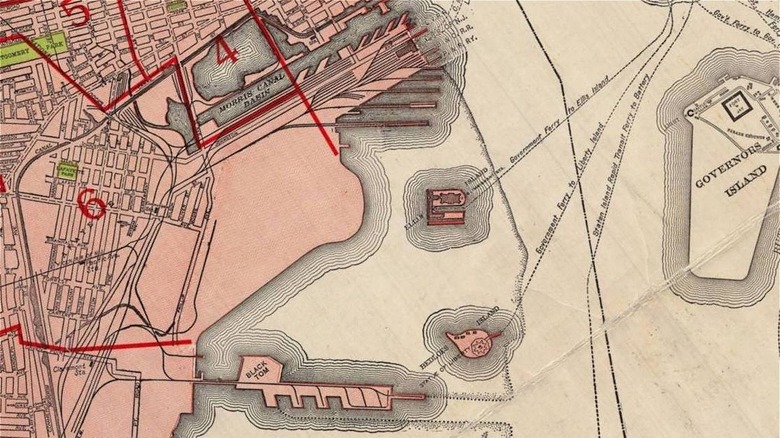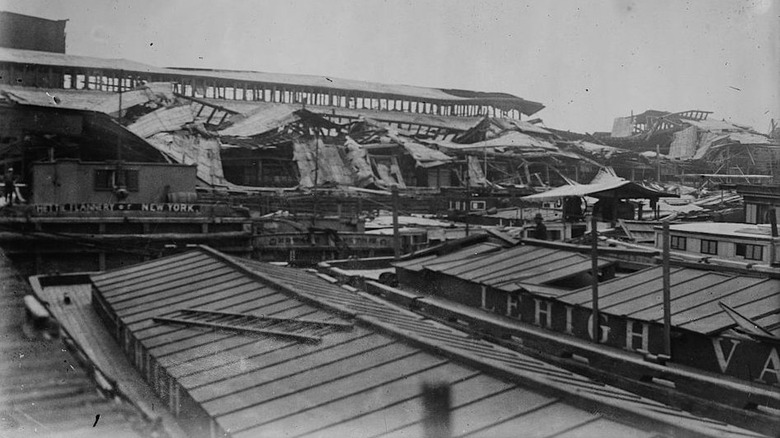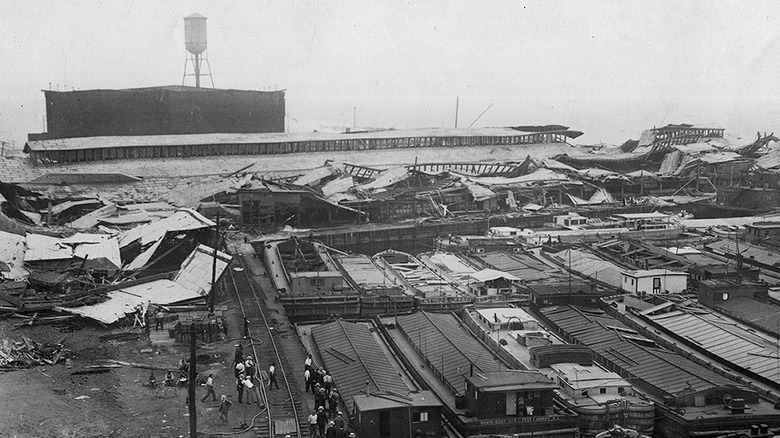The Forgotten World War I Terrorist Attack That Backfired For The Germans
When Americans think of the deadliest terrorist attacks in history, our minds are almost certainly most likely to go first to September 11, 2001, when foreign terrorists hijacked planes and crashed them into buildings in New York City and Washington, D.C. (one plane was commandeered by passengers and crashed into the ground in Pennsylvania), killing nearly 3,000 people, per Britannica. However, terrorism in the United States did not begin on September 11, 2001; a terrorist attack took place in Milwaukee all the way back in 1917, when anarchists deployed a bomb that killed nine police officers, according to Digital History.
A year earlier, according to the FBI, a terrorist attack took place in New York City, although this act was simultaneously an act of terrorism and an act of war (the line can be a thin one indeed). Specifically, a war was taking place, and although the U.S. wasn't directly involved in it at the time, the Germans were; they had a beef with the U.S. and took it out on a train carrying munitions. The plan worked in that the munitions were destroyed and at least five Americans were killed, according to History. It was one of the many messed-up things that happened during World War I. It also backfired horribly, primarily because America was loath to get involved in the war and now had a(nother) reason to.
Black Tom Island
By July 1916, according to History, World War I had been raging in Europe for a couple of years. The U.S., however, was officially neutral. That did not stop American manufacturers from producing weapons and bombs and selling them to the highest bidder, although a British blockade of Germany kept the wares from going there, and instead they went to the British, the French, and the Russians.
The vast majority of those goods left the U.S. via New York City, and in particular, much of it was loaded onto railroad cars at Black Tom Island, according to New Jersey City University. " ... [The facility] probably housed the most extensive arsenal anywhere outside the war zone itself," noted Jules Witcover, author of the book, "Sabotage at Black Tom," via History.
At 2:08 a.m. on July 30, 1916, the first explosion was felt. Some residents of New Jersey even awoke from their beds and gathered at the waterfront to watch the fireworks, and they got quite a show: so powerful was one explosion that bits of shrapnel were thrown into a building on the mainland.
It wasn't all fun and games, however. At the end of the day, several would be dead, according to the FBI, one of whom was an infant, thrown from his crib by the blast. Thousands of windows in two states were shattered, and the facility was leveled to the ground.
The aftermath
It would take decades, literally, for the dust to settle from the terrorist attack and its aftermath. Initially, according to History, officials focused on employees and managers of the facility, with a view towards holding them accountable for criminal negligence. Eventually, the name of a German man came up, according to New Jersey City University: Michael Kristoff, a 23-year-old immigrant who lived nearby. He died in a hospital in 1928.
It would take a team of lawyers, known as the German-American Mixed Claims Commission, many years to finally determine that Germany was responsible, and in 1939 Germany was ordered to repay $50 million in restitution. Of course, we all know what else happened in 1939 involving Germany, and the restitution payments were delayed — for more decades. The final check was issued in 1979, according to History.
The U.S. did get drawn into World War I, of course. The FBI, which suggests that the incident was one of many provocations that eventually dragged the U.S. into the conflict, also mentions other incidents, such as Germany trying to form an anti-U.S. alliance with Mexico.


